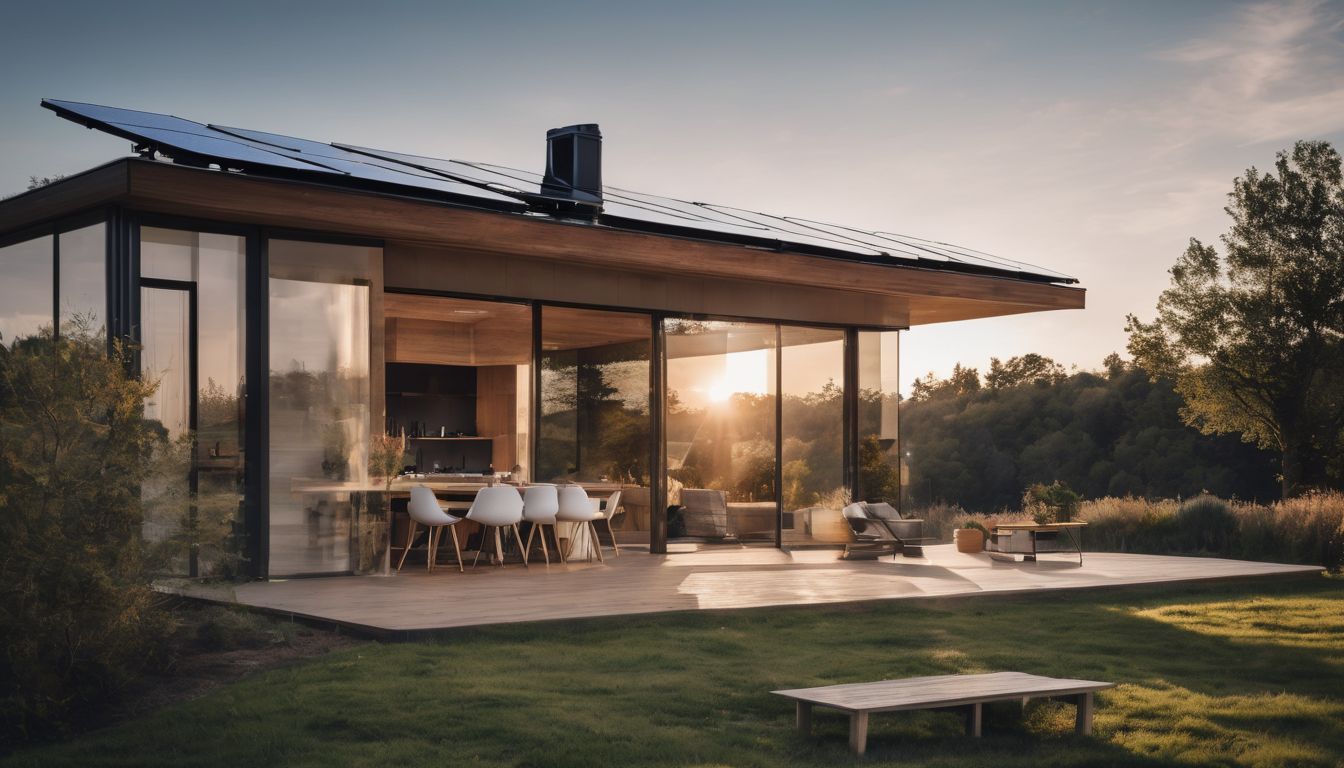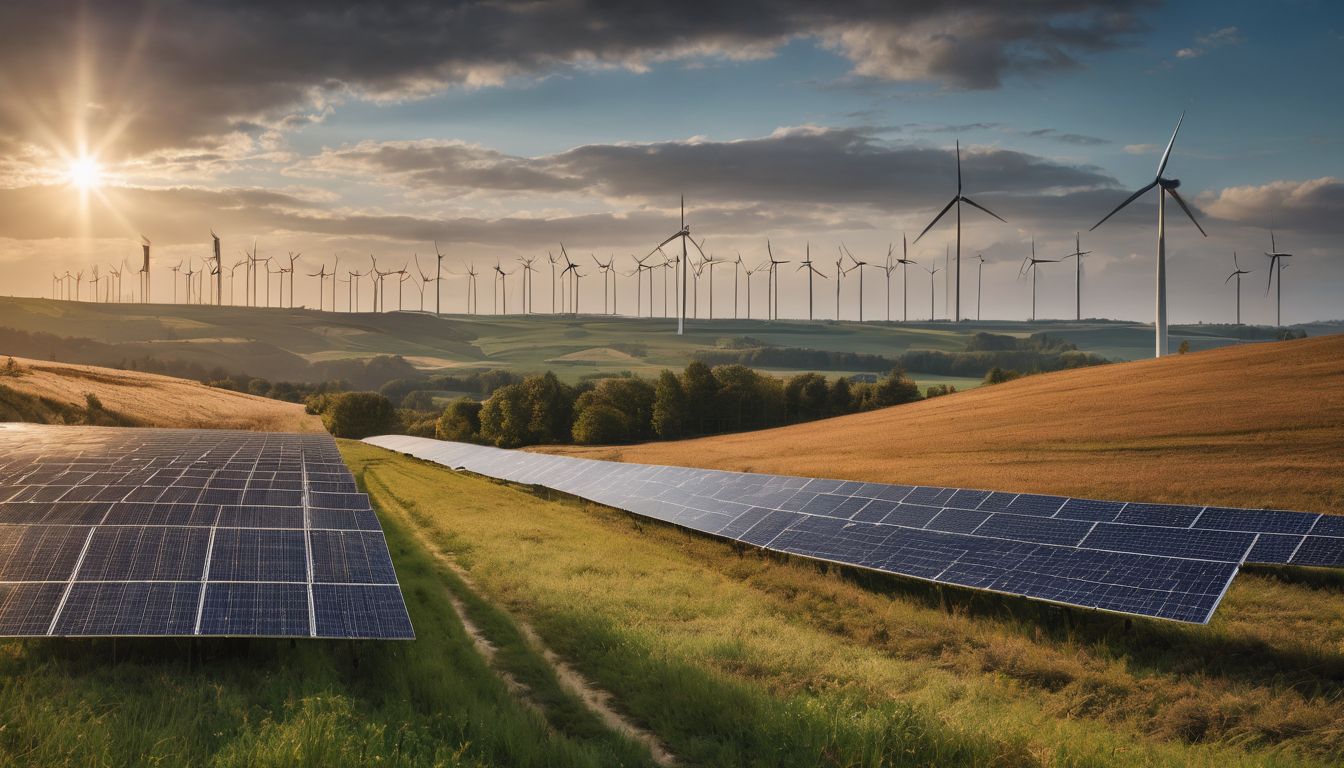Are you feeling the chill despite cranking up your heater? Insulation is the secret hero in our homes, quietly working to keep temperatures steady. In this article, we’ll unwrap how proper insulation can lead to significant energy savings and a lighter carbon footprint.
Stick around – it’s about to get cosy.
Key Takeaways
- Insulation acts as a barrier to keep homes warm in winter and cool in summer, significantly cutting the need for heating and cooling. This effectively reduces energy bills.
- Various materials like fiberglass, cellulose, and spray foam provide different levels of insulation effectiveness. Choosing the right one is key for energy conservation.
- Proper installation and regular maintenance of insulation are crucial for it to work at its best. It’s important to hire professionals for this task.
- Quality insulation helps decrease greenhouse gas emissions by using less energy from fossil fuels, thereby aiding in the fight against climate change.
- Regular checks and upkeep of insulation can ensure that it continues to save energy and money over an extended period.
What is Insulation and How Does it Work?
Insulation is a material that reduces heat transfer between the interior and exterior of a building. It works by creating thermal resistance to prevent heat from flowing through walls, ceilings, and floors.
Different types of insulation materials, such as fiberglass, foam, and cellulose, are used for this purpose.
Definition of insulation
Insulation is a material used to reduce unwanted heat exchange between two environments. It acts as a barrier, keeping warm air inside during cold weather and blocking hot air during warmer months.
This process of thermal resistance helps maintain comfortable indoor temperatures without excessive use of heating or cooling systems.
Different materials such as fiberglass, cellulose, and foam serve as insulation options, each with varying effectiveness in preventing conduction and convection—key contributors to energy loss.
By choosing the right type of insulation for your home or building, you contribute directly to energy conservation efforts and benefit from lower utility bills. Next up: How insulation reduces heat transfer.
How insulation reduces heat transfer
Thermal insulation creates a barrier that hinders heat from flowing in or out of a building. By impeding the transfer of heat through conduction, convection, and radiation, insulation helps maintain consistent indoor temperatures.
This means that during hot summer days, less exterior heat infiltrates the interior spaces, while in the winter months, precious warmth is kept inside rather than dissipating through walls and roofs.
As a result, heating and cooling systems need to work less strenuously to maintain desired temperatures indoors.
Insulation reduces heat transfer by limiting air movement within a structure as well. Uninsulated attics or walls can allow warm air to escape during colder months or permit heated outdoor air to enter during warmer seasons—this creates unnecessary energy usage for temperature regulation.
Types of insulation materials
When considering types of insulation materials, it is important to consider the various options available for maximising energy conservation and reducing heat transfer. Different materials offer different levels of effectiveness in preventing conduction and convection, crucial for maintaining a comfortable indoor environment while minimising energy consumption. Here are some common types of insulation materials to consider:
- Fibreglass Insulation
- Cellulose Insulation
- Spray Foam Insulation
- Mineral Wool Insulation
- Reflective Insulation
- Polystyrene Insulation
- Natural Fibre Insulation
The Role of Insulation in Energy Conservation
Insulation plays a crucial role in reducing heating and cooling costs by preventing air leaks and improving energy efficiency. This leads to lower energy bills and a positive environmental impact by reducing carbon dioxide emissions.
Impact on heating and cooling costs
Insulation reduces the need for excessive heating and cooling, thus lowering energy consumption. This leads to cost savings on energy bills, as less energy is required to maintain a comfortable indoor temperature.
Proper insulation helps prevent air leaks and maintains a consistent indoor climate, reducing the strain on heating and cooling systems.
Improving insulation ultimately results in lower heating and cooling costs, making homes more energy-efficient. By minimising heat transfer through walls, attics, floors, and windows using effective insulation materials such as fibreglass or foam board, individuals can decrease their reliance on artificial climate control while enjoying reduced utility expenses.
Savings on energy bills
Proper insulation significantly reduces the amount of energy needed to heat and cool your home. This means lower monthly utility bills, allowing you to save money in the long run. Effective insulation helps maintain a comfortable temperature indoors, reducing the need for constant heating or cooling.
By minimising energy consumption, you can make a meaningful contribution towards conserving natural resources and protecting the environment.
Moreover, investing in high-quality insulation ensures that your home is more energy efficient, thereby reducing your carbon footprint and promoting sustainable living practices. Not only will you enjoy financial savings on your energy bills, but you will also play a crucial role in supporting environmental preservation and mitigating climate change by using less non-renewable energy sources.
Environmental Benefits of Insulation
Insulation plays a crucial role in reducing greenhouse gas emissions and mitigating climate change. By minimising the need for heating and cooling, it reduces energy consumption and reliance on non-renewable resources.
Reduction of greenhouse gas emissions
Insulation plays a vital role in reducing greenhouse gas emissions by decreasing the energy required to heat and cool buildings. This reduction in energy consumption results in lower demand for fossil fuels, which are a significant source of greenhouse gases.
Properly insulated buildings also require less frequent use of heating and cooling systems, thereby further diminishing their environmental impact.
Furthermore, the diminished need for energy-intensive heating and cooling leads to fewer harmful emissions being released into the atmosphere. As a result, insulation not only helps to reduce individual carbon footprints but also contributes on a larger scale towards mitigating climate change.
Mitigation of climate change
Reducing greenhouse gas emissions through effective insulation significantly contributes to the mitigation of climate change. Insulation minimises the need for excessive heating and cooling, consequently lessening the reliance on fossil fuels and reducing carbon emissions.
As a result, incorporating proper insulation in buildings plays a crucial role in combating climate change by curbing the release of harmful gases into the atmosphere.
Environmentally conscious individuals can make a tangible impact on mitigating climate change by understanding the connection between insulation and reduced carbon emissions. By prioritising effective insulation methods in their homes or workplaces, they actively contribute to global efforts to combat climate change while promoting energy efficiency and conservation.
Factors Affecting Insulation’s Impact
The type and quality of insulation can significantly affect its impact on energy conservation. Proper installation is also crucial for maximum effectiveness.
Type and quality of insulation
The type and quality of insulation significantly impact its effectiveness in conserving energy. Different materials, such as fibreglass, cellulose, or foam, vary in their insulating properties.
The quality of the installation also plays a crucial role in ensuring that the insulation performs optimally. It is essential to choose high-quality insulation materials and ensure they are installed correctly to maximise energy conservation.
Proper insulation not only reduces heat transfer but also enhances air sealing within buildings. This helps maintain a comfortable indoor environment while minimising the strain on heating and cooling systems.
Proper installation
Proper installation of insulation is crucial to maximise its effectiveness. Ensure that the right type and quality of insulation are selected for each area in your home, depending on factors such as climate and building materials.
Professional installation by certified experts can guarantee that the insulation is correctly fitted, eliminating any gaps or compression that could reduce its efficiency.
Regular maintenance also plays a vital role in ensuring the long-term benefits of insulation. By identifying areas in need of additional insulation or repair work, you can continue to enjoy energy savings and environmental advantages while contributing to green building practices and reducing greenhouse gas emissions.
Maximising the Benefits of Insulation
Identify areas in need of insulation, such as attics, walls and floors. Professional installation and regular maintenance are essential for ensuring optimum energy conservation.
Identify areas in need of insulation
Inspect the attic for any gaps in the insulation. Check the exterior walls and basement for any air leaks. Examine windows and doors for possible drafts. Ensure that crawl spaces and floors are adequately insulated. Look for gaps around pipes, ducts, and chimneys. Inspect the garage to see if it requires additional insulation. Regularly assess the insulation in older properties for maintenance needs.
Professional installation
To ensure maximum energy conservation and environmental impact, professional installation of insulation is crucial. Professionals can accurately identify areas in need of insulation and employ the most effective materials for the job without unnecessary waste.
Additionally, their expertise guarantees that the insulation is properly installed to achieve maximum efficiency.
Professional installation also ensures that the insulation maintains its quality over time through regular maintenance checks. This not only extends the lifespan of the insulation but also ensures that it continues to provide optimal energy conservation benefits.
Regular maintenance
To maximise the benefits of insulation, regular maintenance is essential for ensuring long-term energy efficiency. Regularly inspecting and replacing worn-out or damaged insulation helps maintain its effectiveness in reducing heat transfer and conserving energy.
Maintaining clean and properly installed insulation also prevents air leakage and ensures that your home remains adequately insulated throughout the year, contributing to lower heating and cooling costs.
Regular maintenance of insulation not only maintains its energy-saving capabilities but also reduces the overall environmental impact by promoting efficient energy use. By staying on top of regular inspections and upkeep, you can continue enjoying the cost savings while supporting environmental conservation efforts through sustainable energy consumption practices.
Conclusion
In conclusion, insulation plays a vital role in conserving energy. It reduces heat transfer and lowers heating and cooling costs. Properly installed and maintained insulation not only saves on energy bills but also contributes to reducing greenhouse gas emissions.
Maximising the benefits of insulation requires identifying areas that need it and getting professional installation. Regular maintenance ensures that the insulation continues to deliver energy conservation benefits over time.
FAQs
1. What is the role of insulation in energy conservation?
Insulation helps to reduce energy use by limiting heat loss through convection and conduction, making homes more efficient.
2. How does insulation impact my energy bills?
Properly insulating your home can significantly lower your energy bills as it reduces the need for heating and cooling systems to work harder.
3. Will adding insulation help the environment?
Yes, using less energy leads to lower carbon emissions, supporting renewable energy goals and having a positive impact on conservation efforts.
4. Can I combine insulation with renewable energy sources?
Absolutely! Insulating your home complements renewable energy sources by ensuring maximum efficiency in maintaining a consistent temperature inside your house.





